UKC Gun dogs Mass 25 – 35 kg (Adult) Temperament Stubborn, Reserved, Quiet | Scientific name Canis lupus familiaris | |
 | ||
Other names OtterhounDutch "Spaniel" FCI Group 8, Section 3 Water Dogs #221 Colors Black, Roan, Liver, Black & White, Liver & White Similar Stabyhoun, Drentse Patrijshond, Dutch Smoushond, Kooikerhondje, Irish Water Spaniel | ||
The Wetterhoun (FCI No.221, translated into English as the Frisian Water Dog) is a breed of dog traditionally used as a hunting dog for hunting small mammals and waterfowl in the province of Fryslan in the Netherlands. The name of the dog comes from the West Frisian Wetterhûn meaning "water dog." Plural of Wetterhoun is Wetterhounen in Dutch. The breed may also be called the Otterhoun (not to be confused with the Otterhound) or Dutch Spaniel, although it is not a Spaniel-type dog.
Contents
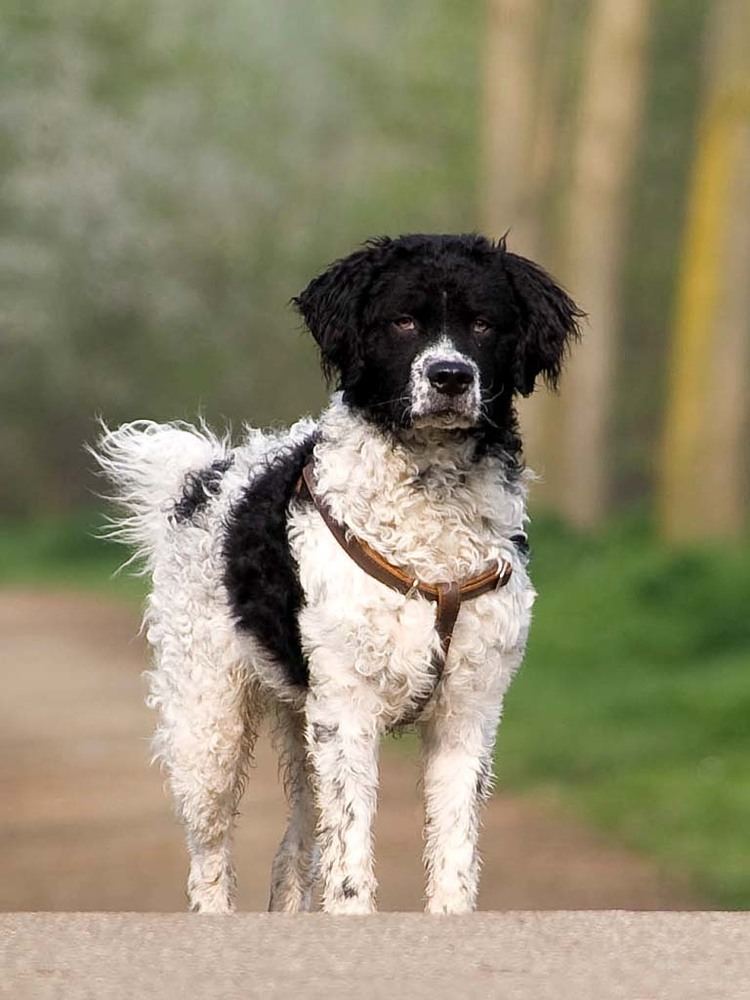
Wetterhoun dog breed
Appearance
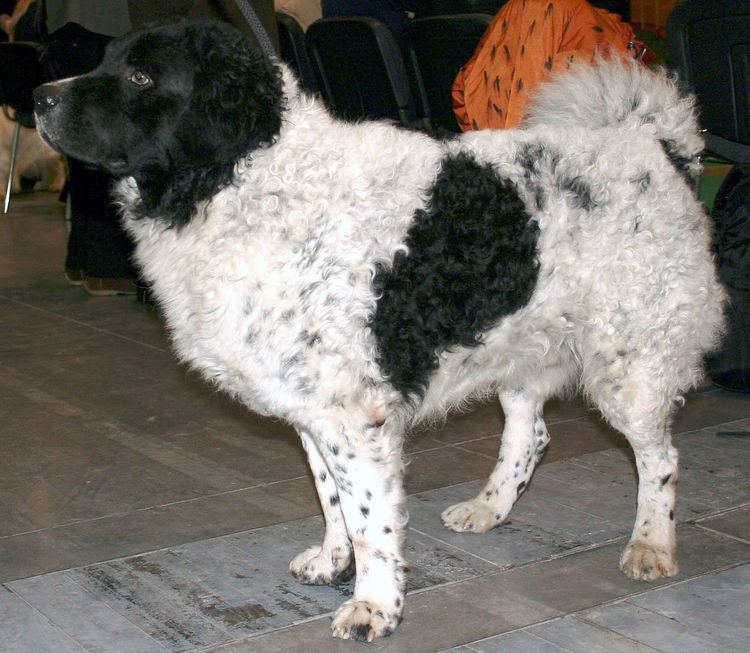
The Wetterhoun is a medium-sized dog between 55 and 59 centimeters (21.6-23 inches) at the withers. They weigh between 25 and 35 kilos (55 and 77 pounds). Their coat is thick and curly except for the head, ears and legs, where the coat is smoother; the water repellant coat is described as having a greasy feel. Coat colour may be solid black or brown, or black with white, or brown with white, with or without white ticking or roan marks. The texture of the coat should not be woolly, as such fur will not resist water. The ears are low set and hang flat to the head, and the tail curls tightly over the back. The breed has an unusual, somewhat grim expression due to the shape of the eyes, which marks it as different from other dog breeds.
History
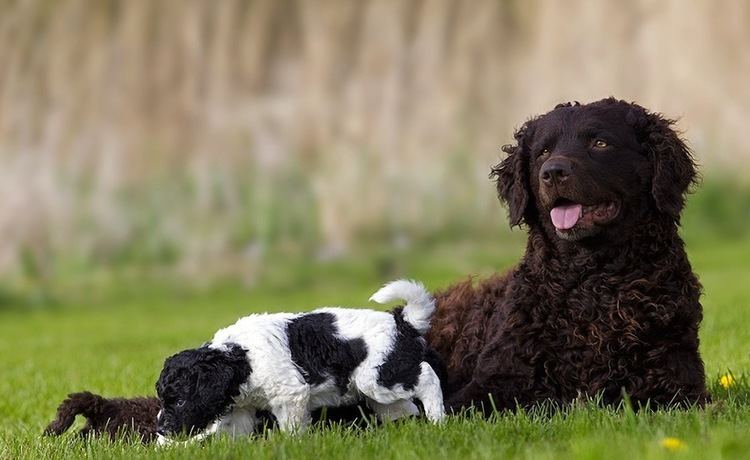
The ancestral type of the Wetterhoun was developed at least 400 years ago in the Dutch province of Fryslan. The origins of the Wetterhoun are conjectured to be from Gypsy dogs, crossed with an indigenous Frisian dog, perhaps the Old Water Dog, a type which is now extinct. Dogs of this type were kept for the difficult and dangerous hunting of fitch (Mustela putorius) and otter (Lutra lutra) in the water. The dogs were also used for retrieving waterfowl and as watch dogs. Although the dogs almost disappeared during World War II, fanciers were able to bring the breed back through careful breeding, and it is gaining in popularity.
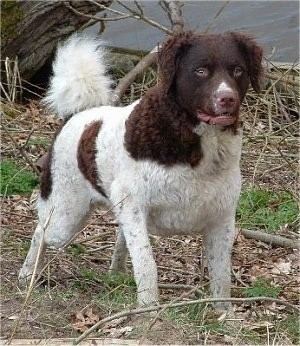
Databases are maintained by the Nederlandse Vereniging voor Stabij- en Wetterhounen (Club for the Stabij and Wetterhoun) and De Wetterhoun Vereniging Nederland for understanding pedigrees and computing inbreeding coefficients.
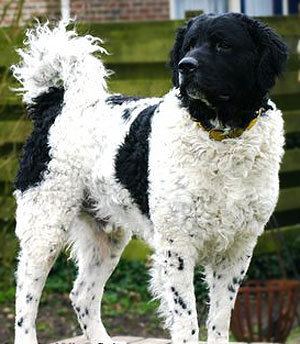
Internationally the breed is recognised by the Fédération Cynologique Internationale in the Water Dogs section of Group 8. The United Kennel Club recognises the breed in its Gundog Group. The breed is also recognized by a number of minor registries, hunting clubs, and internet-based dog registry businesses and promoted as a rare breed for those seeking an unusual pet.
Temperament

This breed is an excellent gun dog, effective as both a land and water retriever, however its strong will and natural guarding abilities make early training a requirement. The breed standard describes the breed's temperament as reserved and "an ideal guard-dog". though never aggressive, which makes it an excellent family-dog.
Although described as "strong willed" the Wetterhoun is never stubborn or wilfully disobedient. Perseverance is a much better term, because they finish what they started, whatever it takes. Imperturbable they finish what they think to be their task. Thereby the breed is sensitive and should never be treated or trained harshly. Brought-up and used to children, they are tolerant to children to the point where the dog should be protected against the children instead the other way around
